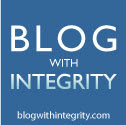As 2009 draws nearer, catalogers are talking more about RDA and what it’s arrival will mean for libraries. RDA (Resource Description and Access) will replace the familiar AACR2 (Anglo-American Cataloging Rules, 2nd ed.) which has been the cataloging standard since 1978.
There is another set of initials involved in this scenario: FRBR (Functional Requirements for Bibliographic Records), an idea which has been around for about 10 years, but hasn’t gotten much press until recently. FRBR is a conceptual model that considers Work, Expression, Manifestation, and Item.
The Work is a “distinct intellectual or artistic creation.” Most of the time, it’s the title, but there are certain Works that are known by a variety of titles. Consider Hamlet which is also the Tragedy of Hamlet, Prince of Denmark; Shakspeare’s Hamlet, Prince of Denmark; or Shakespeare’s tragedy of Hamlet depending on what happens to be printed on the title page. Yet, they are all the same Work.
If that Work (regardless of the title) is translated into another language, we now have a different Expression of the Work. If someone makes an audio recording of that Work (in either language), we now have a different Manifestation of the Work.
Item refers to the specific copy of the Work that you have in your library.
Some libraries are already taking advantage of the FRBR model in their OPACs (Online Public Access Catalogs). Products such as Endeca and Aquabrowser allow users to qualify their search easily by subject, genre, language and format.
But back to AACR2 and RDA. AACR2 was written primarily with printed materials in mind. Other media such as sound recordings could be incorporated with modifications. However, electronic media has been evolving so quickly that Chapter 9, which provides the rules for such things, had to be revised several times. The format, originally called MRDF (Machine Readable Data File) became Computer File and then Electronic Resource. As digitization, streaming media, and other new technologies were created, it became harder and harder to apply AACR2.
Joint Steering Committee for Revision of AACR gathered and began revising the rules to accommodate FRBR and digital media. It soon became evident that more than a revision was needed. Describing new and future media required an entirely new approach and the idea of RDA was born. The intension of RDA is to provide general guidelines that allow catalogers to describe items without the restrictions of AACR2.
However, it seems that very few people are happy with RDA. Many think the guidelines are too general and will result in inconsistent bibliographic records that are less likely to be shared among libraries. Others feel RDA is too much like AACR2 and will not be as easy to use for non-print media as they had hoped.
What does all of this mean for the cataloger in a small library that uses Library of Congress or OCLC for its source of cataloging? Probably not much right now. RDA is due out in the spring of 2009, and that’s an optimistic goal. The bibliographic records for books, CDs, and DVDs will likely continue to look very much the same for a while. The biggest impact will be on the “one of a kind” works.
Back when Quick T.S. was a column in the print newsletter Centralities, I wrote articles on RDA (p. 7 February 2006) and FRBR (p. 14 January 2006) as well one on the new OPACs (p. 14 January 2006). All of those articles contain links for more details.
I’ll continue to monitor the blogs and discussion lists for more information on the status of RDA and to post summaries. Stay tuned.
Subscribe to:
Post Comments (Atom)


No comments:
Post a Comment